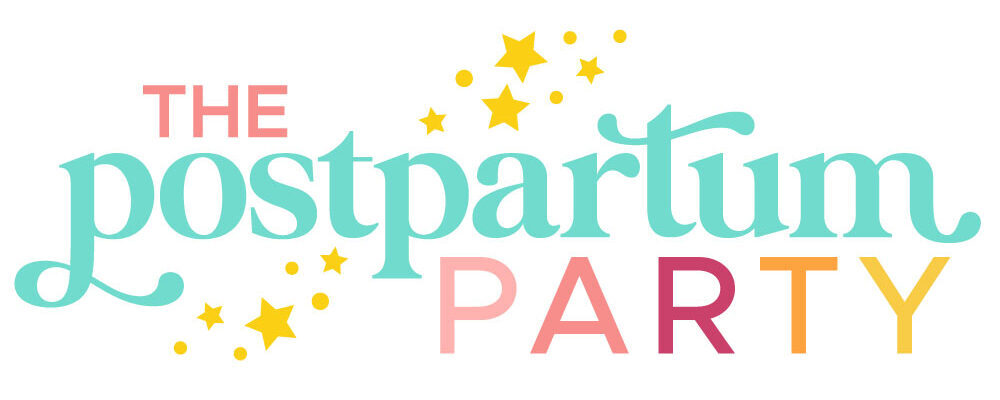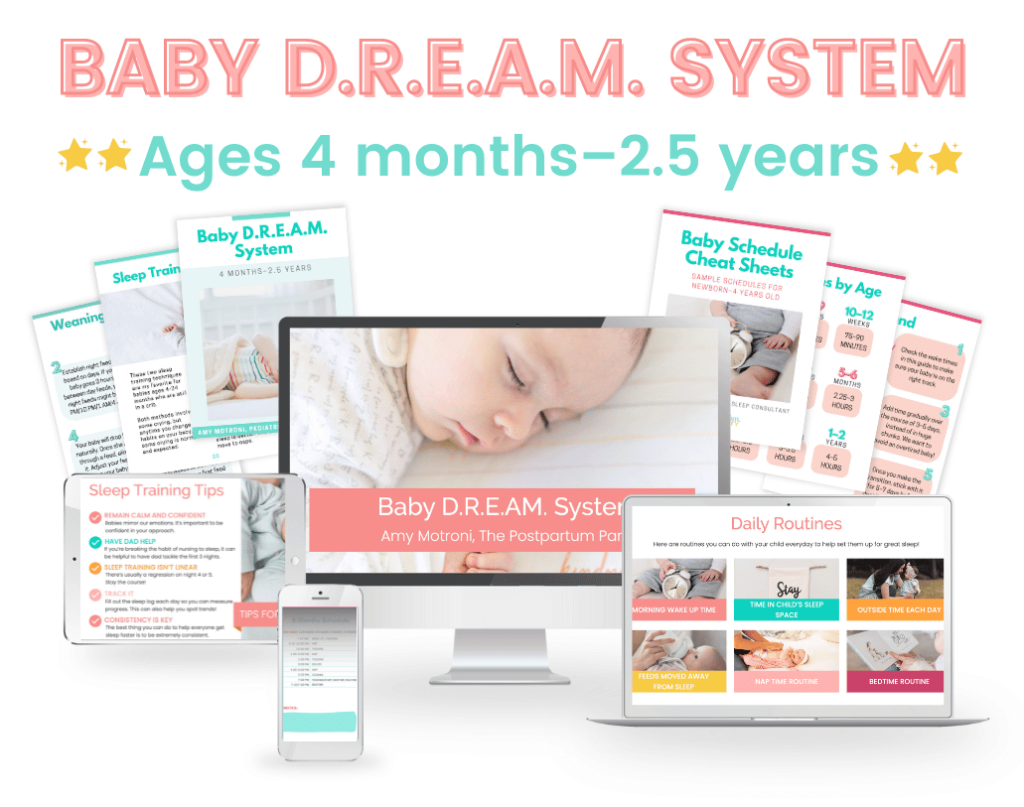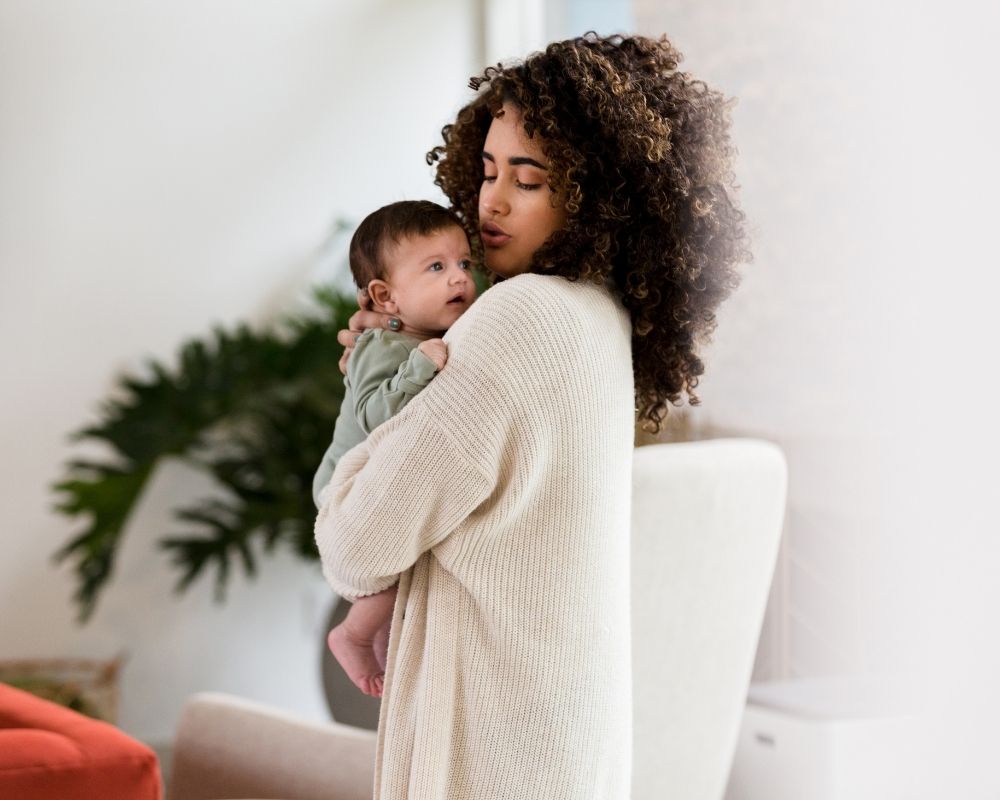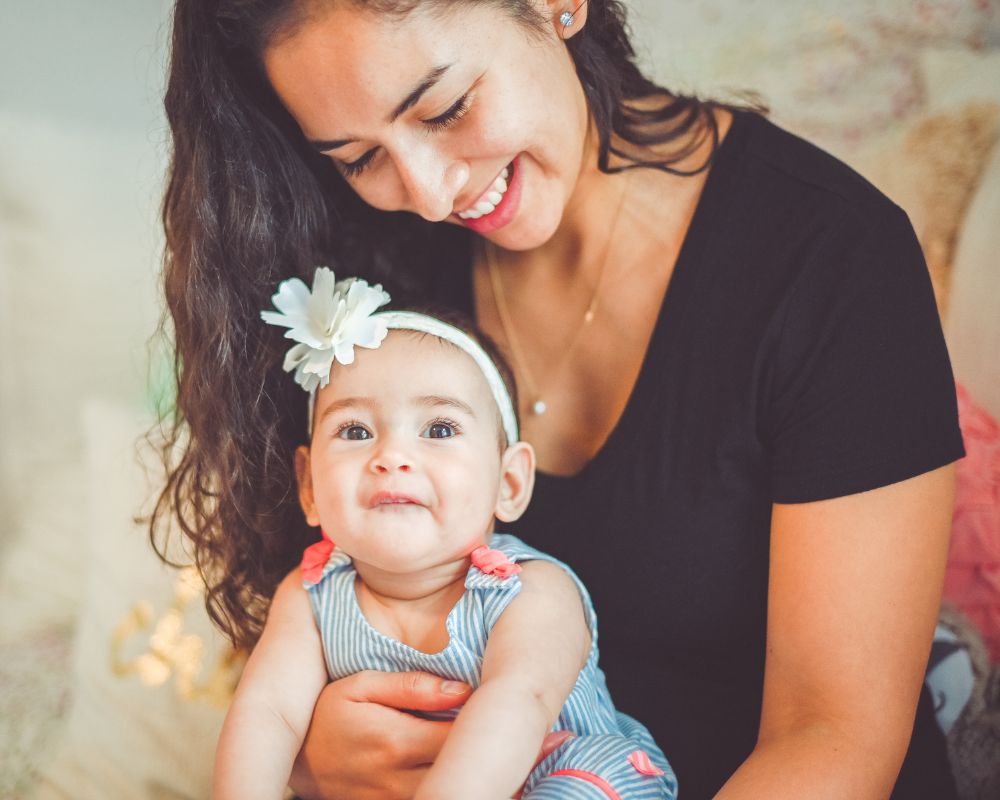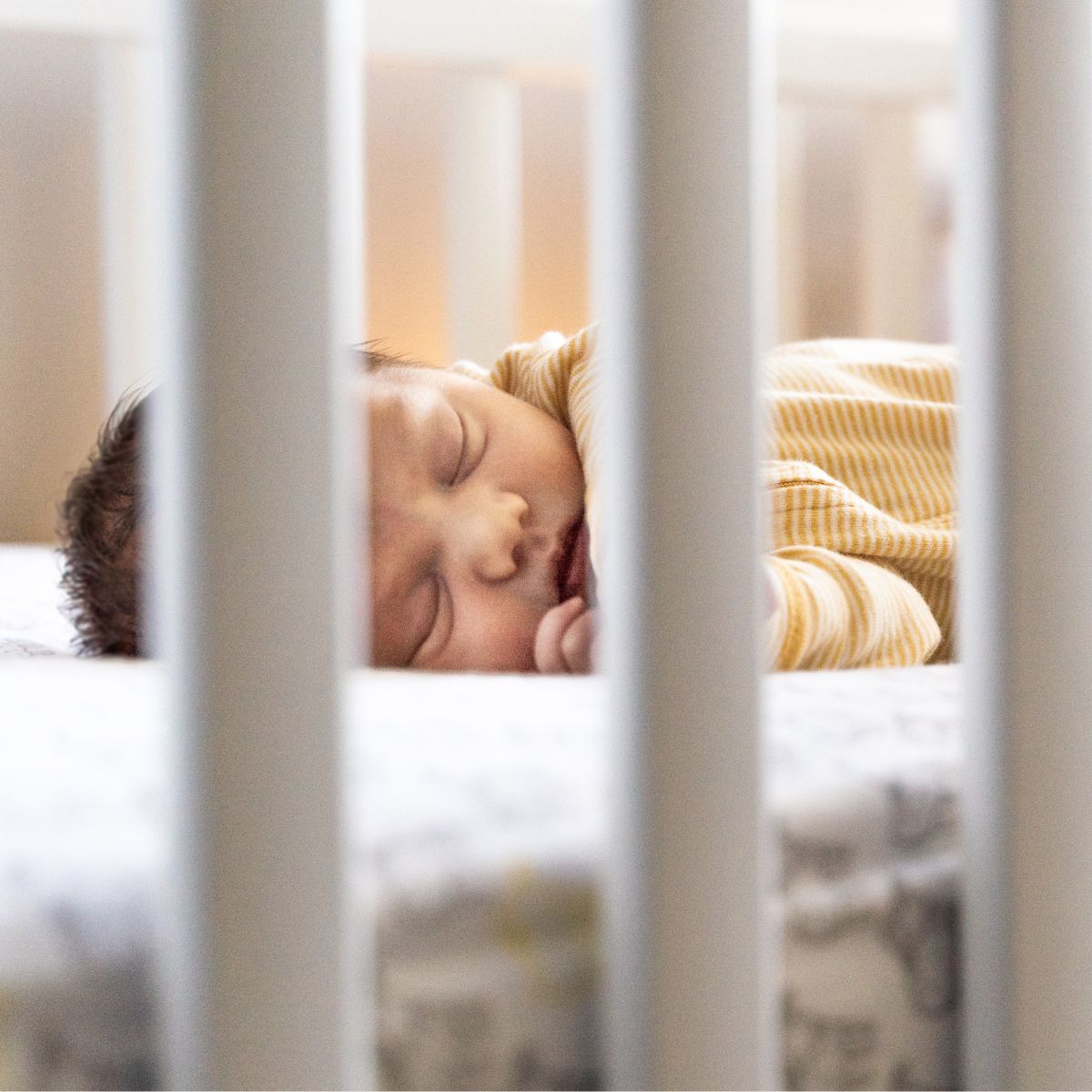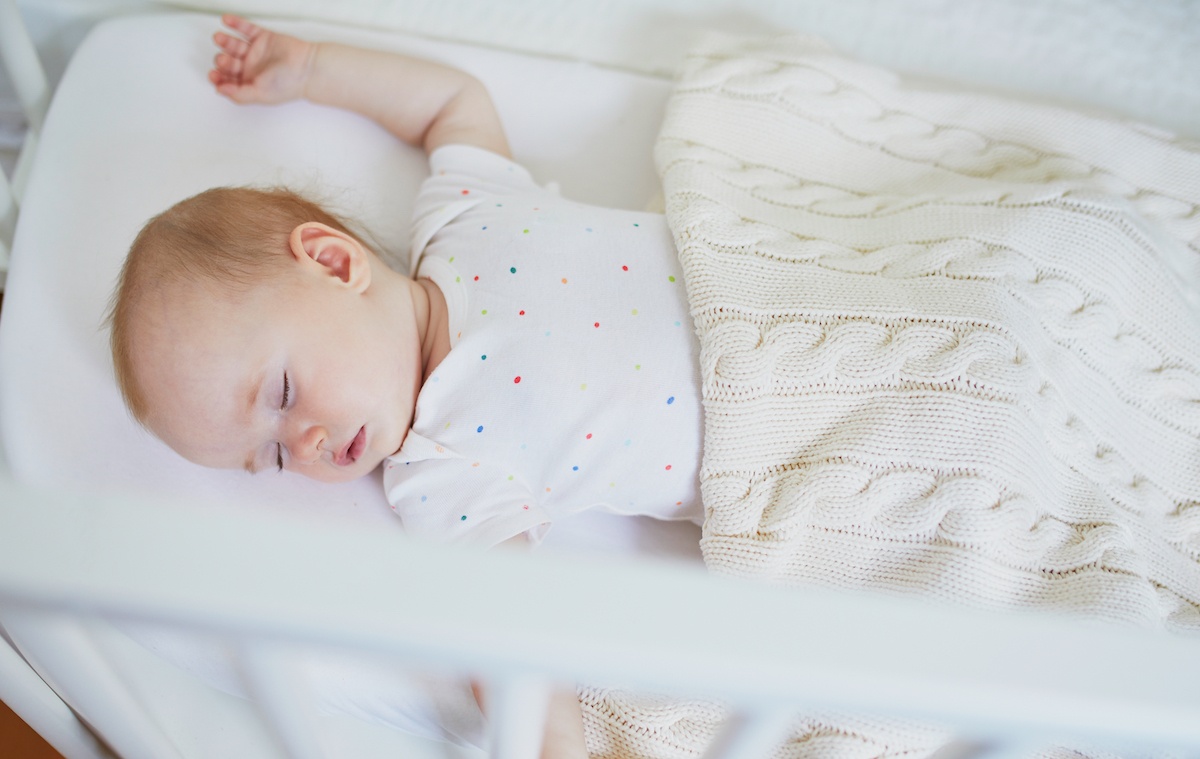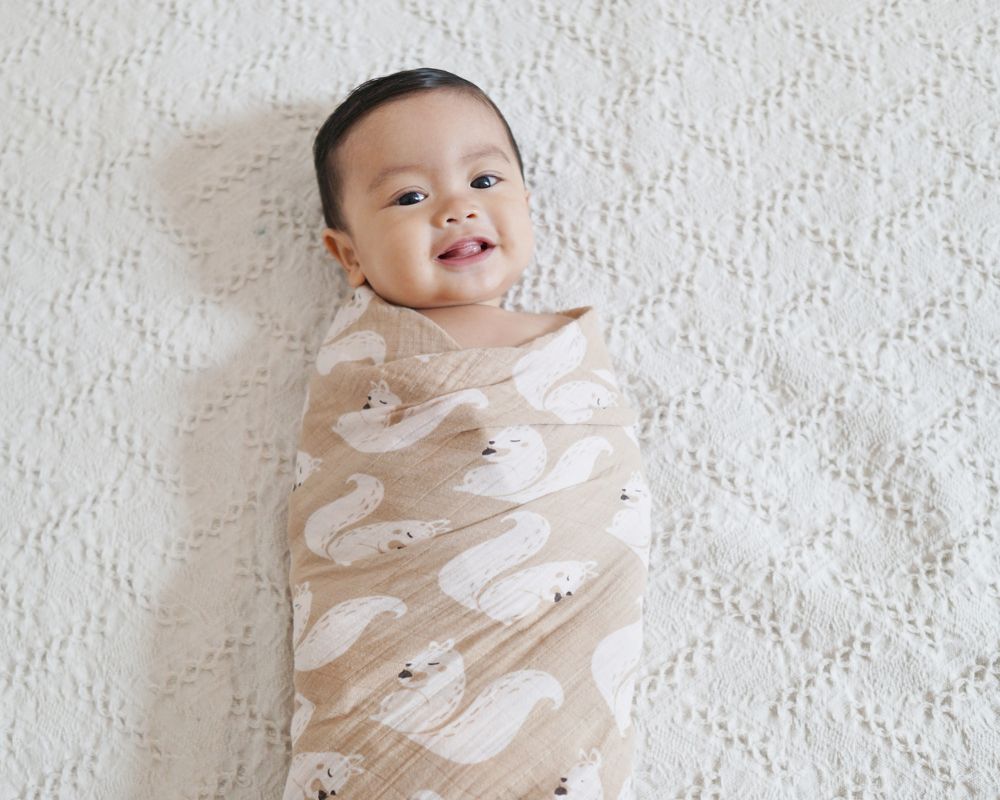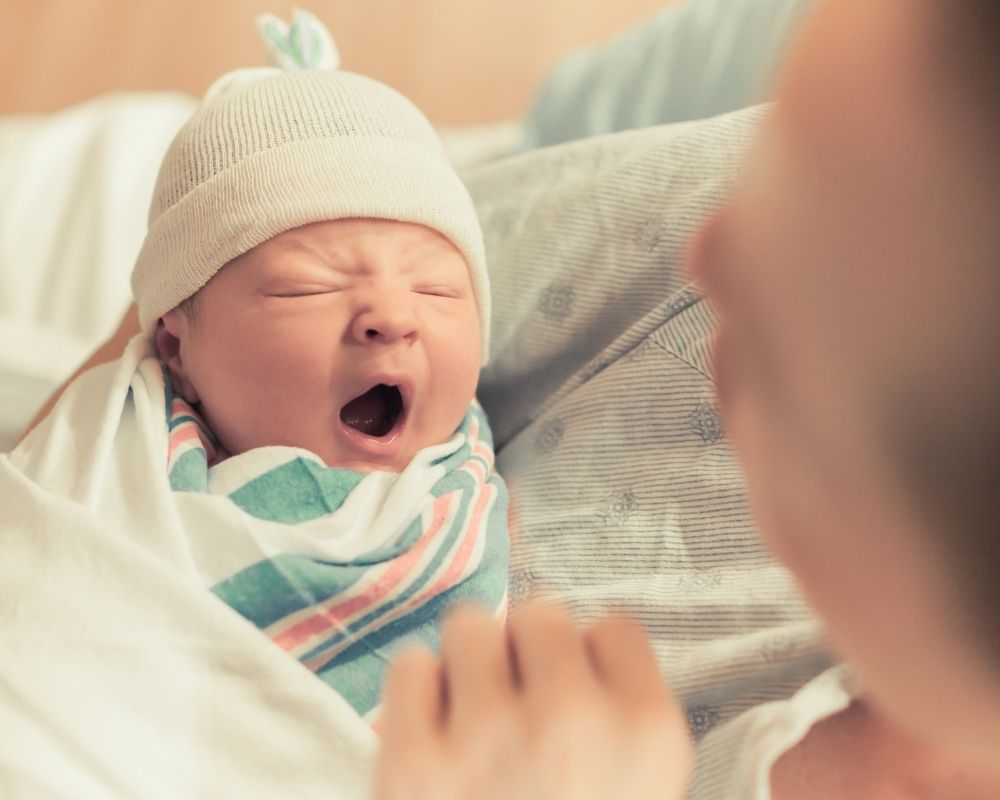Are you dealing with short naps? Let’s talk about how crib hour can help turn things around and get your baby longer naps!
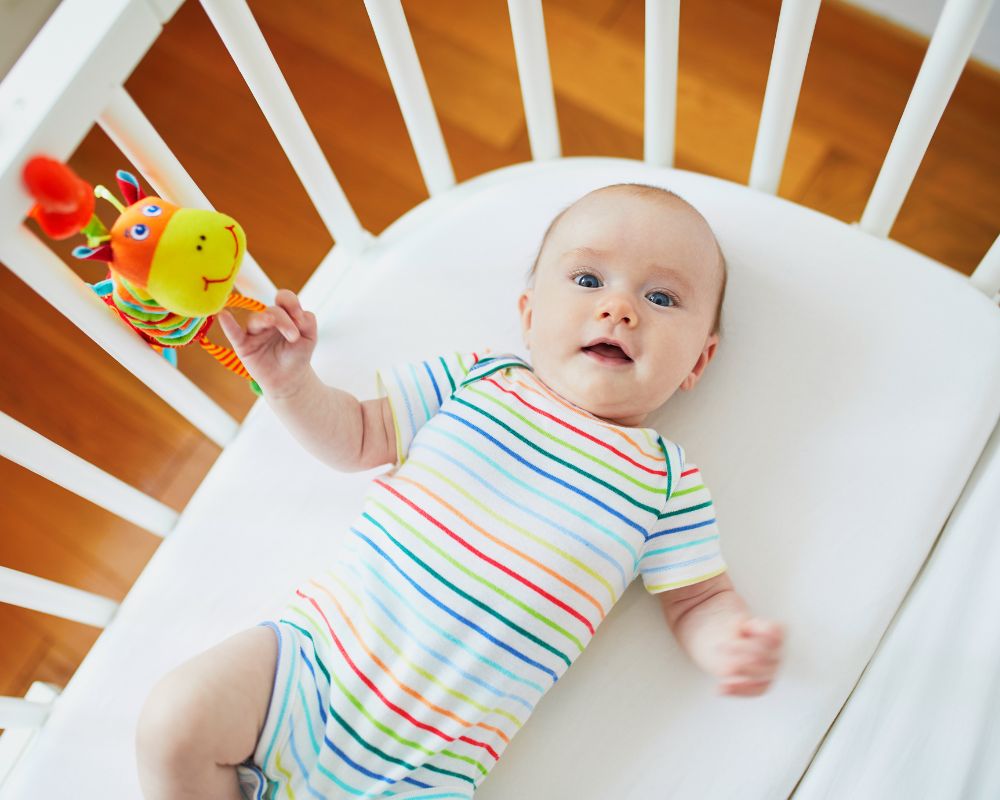
Handling wakings in the middle of the night was hard when my daughter was little. But I have to say the the most make-or-break element of our days was whether or not she took good naps.
I’m sure I’m preaching to the choir here, but when our babies are little, nap time is an especially sacred time for parents.
The possibilities are endless: you can nap too, or get organized, or work out, or veg out!
When naps are going well for your little one, things are good for everyone.
But what if—all of a sudden—your baby is only napping for 30 minutes at a time? Maybe this is happening regularly and you’re at your wits end!
While it’s tempting to just give in to short naps as “the way my baby is,” don’t forget that babies need good daytime sleep to improve their night sleep! In other words, sleep begets sleep.
Did you know there’s a nap training technique to help with short naps? It’s called crib hour and can be used to get long naps back.
Let’s talk about how crib hour can help improve the length and quality of your baby’s naps.
Is your baby struggling with short naps? To help you better, grab my free guide to solving short naps to get practical tips of how to get your baby to take longer naps every single day. Click here to grab it, it’ll be super helpful.
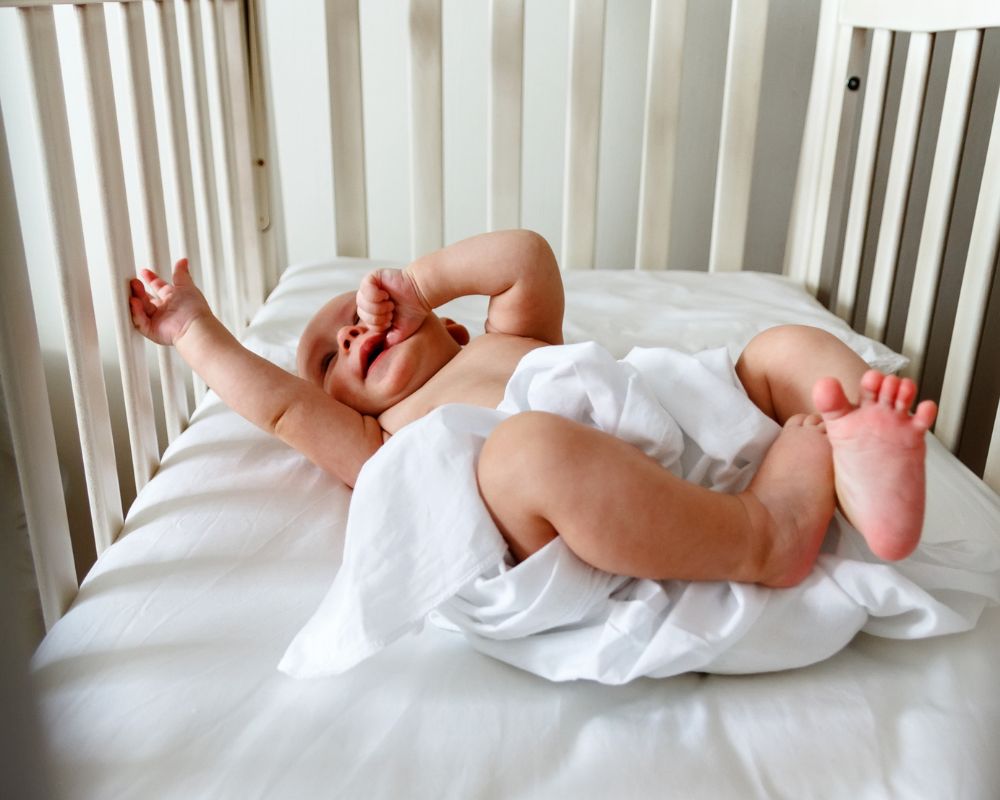
What is Crib Hour?
Crib hour is when you leave your baby in their crib for at least a full hour at nap time, regardless of whether they sleep or not.
The purpose of crib hour is fairly straightforward.
Sometimes babies need a little more time and space in order to fall back asleep.
If you rush to getting them up right after they wake up, it can perpetuate the cycle of short naps.
But if you leave your baby in an optimal sleep space, they’re more likely to fall back asleep after one sleep cycle.
Crib hour provides the best setting and opportunity for your baby to weave two or more sleep cycles together.
When Should You Start Crib Hour?
I don’t recommend doing crib hour until your baby is at least 6 months old.
That’s because younger babies aren’t always capable of syncing their sleep cycles and naturally extending their naps until they’re about 6 months old.
It’s also important to only practice crib hour if your baby has learned independent sleep skills.
If your baby still nurses to sleep, is rocked to sleep, or otherwise relies on your presence in some way to fall asleep, crib hour will not be productive for them.
Take the steps to promote self-soothing habits (including not nursing to sleep) before giving crib hour a try.
However, if your baby is at least 6 months old, you’ve successfully used a sleep training method, and your baby can put themselves to sleep independently, you can try crib hour.
Get Better Sleep with The Baby D.R.E.A.M. System
If you want someone to walk you through the process of sleep training, let me help. The Baby D.R.E.A.M. System is for babies 4 months through 2.5 years old. I’ll walk you through how to establish daily routines, sleep schedules, and sleep training techniques to help you break the sleep associations you no longer find beneficial! Check it out here.
How To Do Crib Hour
Put your baby down for a nap and take note of what time they fall asleep.
The clock starts as soon as your baby falls asleep at nap time, so pay attention to when your baby dozes off.
Once they’re asleep, cross your fingers and hope they stay that way!
But if they wake up before an hour has passed, plan to let them hang out in their crib until your timer hits the one hour mark.
Make sure they’re in a dark room so they have the best chance at falling back asleep. See how to make a nursery dark if you need ideas!
If your baby isn’t upset while they’re laying awake, I wouldn’t intervene at all. Just let them hang out, and they might drift back off to sleep.
Keep in mind that your presence can be especially stimulating for naps. You can use your sleep training method or do full extinction method for the middle of naps.
You can choose to use crib hour for all of your baby’s naps, or start with the first nap of the day until that nap turns into a long nap.
Here’s an example of what this could look like:
- Baby falls asleep at 9:30 am (timer starts)
- Baby wakes from nap at 10:10 am (baby slept for 40 minutes)
- Baby stays awake in the crib from 10:10-10:30 am (until 60 minutes of crib hour has passed)
- Get baby out of the crib and say nap time is over at 10:30 am and start a new wake window
For babies who only take one nap, some parents may choose to do Crib 90, where they leave their toddler in their sleep space for up to 90 minutes to see if they’ll fall back asleep.
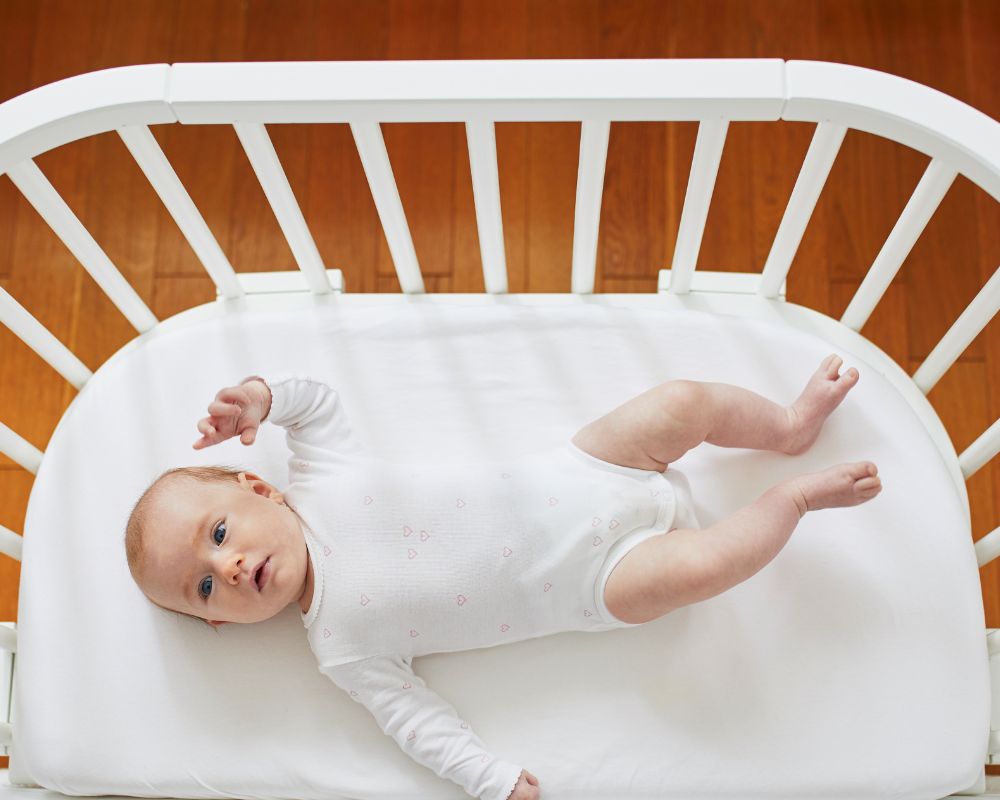
Does the Wake Window Start After Crib Hour?
Yes, your baby’s wake window will begin with their “out of crib” time.
That means your baby’s wake window will start as soon as you pick them up from crib hour, not from the time they opened their eyes.
There are two reasons for this:
- If your baby is awake but in a dark environment and not upset, it’s still restful for them.
- If you shorten the next wake window, it can perpetuate the vicious cycle of short naps. If you’re doing crib hour with older babies, they should be able to make it through the next wake times even if it’s technically a bit longer.
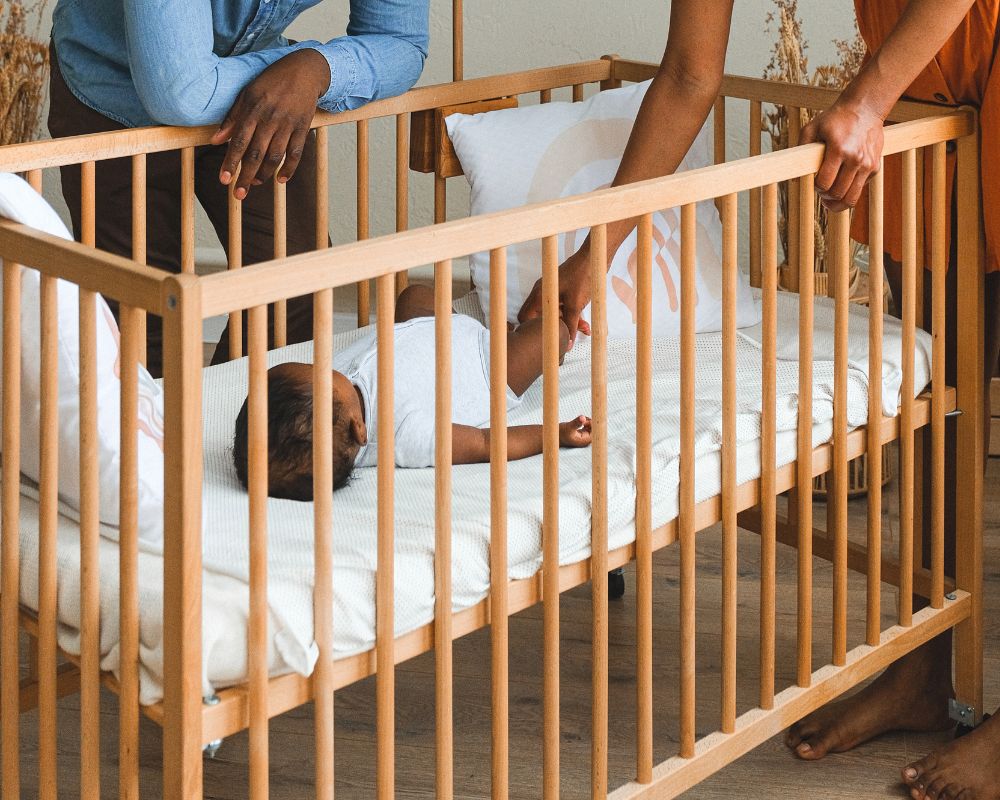
Does Crib Hour Actually Work?
Yes, crib hour absolutely works!
Just like with any other sleep training method, it may not work right away. But with consistency, babies typically fall back asleep when given enough time and space to do so.
In fact, I’ve seen plenty of crib hour success. I have worked with several families who have implemented crib hour and it has worked each time, giving their baby (and them) better naps!
Don’t stress too much about your baby not getting enough daytime sleep when you first start crib hour. Even when your baby is awake in the crib, they’re still in a restful setting which is good for their tired bodies.
I understand that the first time or two that you use this method, you might be in for some crib hour crying. Hang in there!
Why is My Baby Taking Short Naps?
When they are young, a baby’s sleep cycle can be as short as 20 minutes. Babies who wake up after short naps are usually waking up because they reach the end of one sleep cycle and haven’t moved into the next sleep cycle yet.
They may have trouble transitioning sleep cycles for many reasons but the most common ones are:
Not Following Wake Windows
Babies can only be awake for so long before they need to sleep again. Make sure you’re following your baby’s sleep cues and the right wake windows for their age.
Overtired or Undertired
They’re overtired or undertired. An overtired baby will have a hard time falling asleep and staying asleep, while an undertired baby may wake up from a nap early because they didn’t have enough sleep pressure built up. Make sure your baby’s sleep schedule is dialed in properly!
Sleep Environment is Off
Their environment doesn’t facilitate sleep. Consider incorporating blackout curtains and a continuous white noise machine if you haven’t already.These are the best sound machines for babies.
Sleep Associations
They have a sleep association and need help getting back to sleep. If your baby is used to nursing or rocking to sleep, they may wake up after one sleep cycle and wonder why they’re in a different place than the one they fell asleep in!
In order for crib hour to work, your baby must be able to put himself to sleep initially.
If your baby puts himself to sleep and you’ve triple checked their wake windows and sleep schedule, then you can use crib hour to help extend those naps!
I promise you’ll get through this! And as always, I’m here to help so let me know how crib hour is going in the comments below.
- Test - April 18, 2024
- Newborns and Swaddling (Safety Tips) - March 19, 2024
- 25 Baby’s First Christmas Ornament Ideas - March 18, 2024
